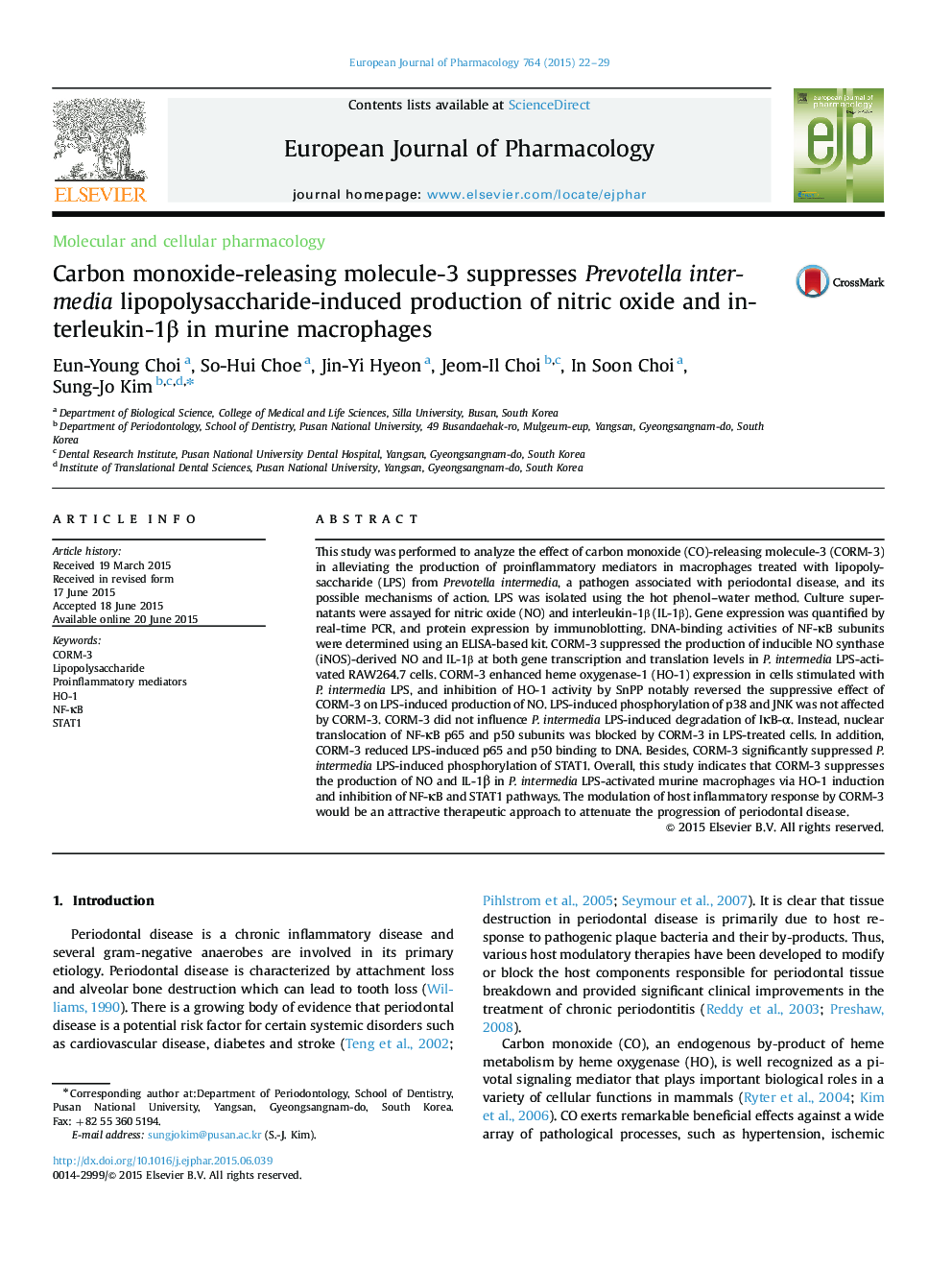| Article ID | Journal | Published Year | Pages | File Type |
|---|---|---|---|---|
| 2531319 | European Journal of Pharmacology | 2015 | 8 Pages |
This study was performed to analyze the effect of carbon monoxide (CO)-releasing molecule-3 (CORM-3) in alleviating the production of proinflammatory mediators in macrophages treated with lipopolysaccharide (LPS) from Prevotella intermedia, a pathogen associated with periodontal disease, and its possible mechanisms of action. LPS was isolated using the hot phenol–water method. Culture supernatants were assayed for nitric oxide (NO) and interleukin-1β (IL-1β). Gene expression was quantified by real-time PCR, and protein expression by immunoblotting. DNA-binding activities of NF-κB subunits were determined using an ELISA-based kit. CORM-3 suppressed the production of inducible NO synthase (iNOS)-derived NO and IL-1β at both gene transcription and translation levels in P. intermedia LPS-activated RAW264.7 cells. CORM-3 enhanced heme oxygenase-1 (HO-1) expression in cells stimulated with P. intermedia LPS, and inhibition of HO-1 activity by SnPP notably reversed the suppressive effect of CORM-3 on LPS-induced production of NO. LPS-induced phosphorylation of p38 and JNK was not affected by CORM-3. CORM-3 did not influence P. intermedia LPS-induced degradation of IκB-α. Instead, nuclear translocation of NF-κB p65 and p50 subunits was blocked by CORM-3 in LPS-treated cells. In addition, CORM-3 reduced LPS-induced p65 and p50 binding to DNA. Besides, CORM-3 significantly suppressed P. intermedia LPS-induced phosphorylation of STAT1. Overall, this study indicates that CORM-3 suppresses the production of NO and IL-1β in P. intermedia LPS-activated murine macrophages via HO-1 induction and inhibition of NF-κB and STAT1 pathways. The modulation of host inflammatory response by CORM-3 would be an attractive therapeutic approach to attenuate the progression of periodontal disease.
